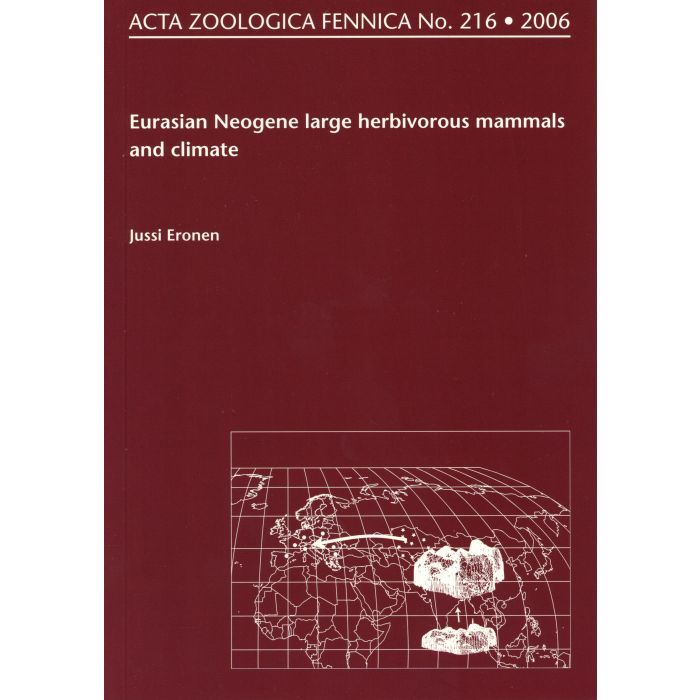We use cookies to make your experience better. To comply with the new e-Privacy directive, we need to ask for your consent to set the cookies. Learn more.
Eurasian Neogene large herbivorous mammals and climate
€26.00
In stock
SKU
951-9481-63-X
Eronen, Jussi
Eurasian Neogene large herbivorous mammals and climate
Finnish Zoological and Botanical Publishing Board
Acta Zoologica Fennica 216
Vammala 2006, 72 pp.
Eurasian Neogene large herbivorous mammals and climate
Finnish Zoological and Botanical Publishing Board
Acta Zoologica Fennica 216
Vammala 2006, 72 pp.
The development and changes in the distribution of herbivorous mammal communities during the Neogene is complex. The Eurasian scale environmental patterns reflect the large-scale geographical and climatic patterns. The distribution of mammal taxa was closely associated with the distribution of biomes. The early and middle Miocene that seemed to have been advantageous for mammals was followed by drying of environments during the late Neogene. The mid-latitude drying was the main trend, and it is the combined result of the retreat of the Paratethys, the uplift of the Tibetan Plateau and changes in the ocean currents and temperatures. The common mammals were "driving" the evolution of mammalian communities. During the late Miocene we see the drying affecting more and more regions, and we see changes in the composition of mammalian communities.
For older issues of Acta Zoologica Fennica, contact tiedekirja(at)tsv.fi.
For older issues of Acta Zoologica Fennica, contact tiedekirja(at)tsv.fi.
| Publisher | Finnish Zoological and Botanical Publishing Board |
|---|---|
| ISBN | 951-9481-63-X |
| ISSN | 0001-7299 |
| Series | Acta Zoologica Fennica |
| Published (year) | 2006 |
| Cover | Softcover |
| Type of Binding | Softcover binding |
| Languages | english |
| Disciplines | Zoology |


